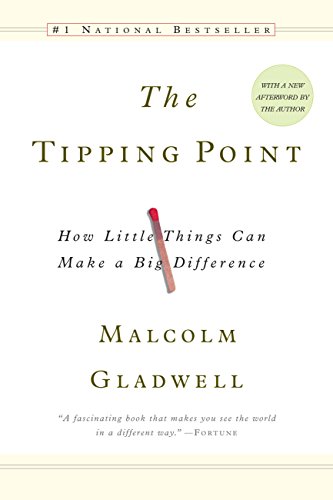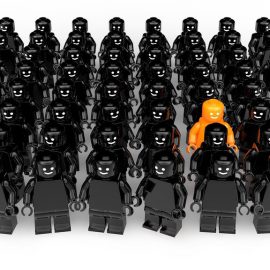

This article is an excerpt from the Shortform summary of "The Tipping Point" by Malcolm Gladwell. Shortform has the world's best summaries of books you should be reading.
Like this article? Sign up for a free trial here .
What is the Rule of 150? What does it say about how we function and cooperate in large and small groups?
The Rule of 150 is a concept in sociology that says that social structures function best at or under 150 people. Groups bigger than 150 people tend to break into smaller groups in order to function.
We’ll look at an example of the Rule of 150 to see how it functions in business organizations.
The Rule of 150
On a community level, people have a capacity to have some kind of social relationship with about 150 people. In different cultures and organizations — from tribes to military divisions — people have organically realized that social structure functions best at or under 150 people. This is called the Rule of 150.
In a community of 150 or less, people know everyone well enough to keep each other accountable to get work done, to abide by social standards, and to follow other group policies and norms. This is why the Rule of 150 works. Groups of this size are better able to reach consensus and act as one. Beyond that limit, smaller groups start to break off and organizational hierarchies (e.g. management structures in companies) may be needed to keep order.
Groups also use a joint memory system called transactive memory to act more efficiently and cohesively. People are not limited to the facts and information we can memorize; we remember the sources of useful information — like phone books and maps and recipe books — to give us access to much more than our memory can hold. When we rely on the people we have close relationships with to hold information for us, this is called transactive memory.
Couples and families do this often. If you’re talking about a movie you saw and can’t remember an actor’s name, you may turn to your spouse to help you fill in the missing information because she tends to be better at remembering those kinds of details. Or if you just came home with a new tech device and don’t know how to program it, you know your teenage daughter is the best person in your family to ask for help. This is an element of the Rule of 150.
In this way, groups develop a joint memory system in which each person organically becomes the resident expert on one topic or another, based on who is best suited to remember that kind of information. Transactive memory makes groups more efficient because each person does not need to know a little bit of everything. Instead, she just needs to know who has the expertise she needs. For this to work, the group must be small enough that the members know each other well enough to know who knows what, and to trust each other to be proficient and reliable within their individual areas of expertise.
Rule of 150 Example: Gore Associates’s Success
One example of the application of the Rule of 150 in a business setting is Gore Associates, a multimillion-dollar company that produces Gore-Tex fabric as well as high-tech products. Gore has followed the Rule of 150 throughout its growth as a steadily and increasingly profitable, innovative company with low turnover.
The company’s founder continually creates new divisions of the company to keep each one at or under 150 employees, essentially creating communities. Production plants are built to hold up to 150 people, and when one plant gets close to capacity, another one is built nearby. Although all the plants are part of the same company, each one has its own culture and community. Through transactive memory, each person in a plant or division knows which coworker has the expertise to help with any question that comes up.
Keeping plants and divisions of 150 or fewer employees (and following the Rule of 150) creates peer pressure, social norms, and other group influences that help maintain the company’s standards. It’s harder for employees to slack off, for example, if they know everyone in the building — and everyone knows them, and knows who’s responsible if there’s a delay in one part of the production process. Gore does not have formal management structures in its plants because communities of this size self-regulate.
———End of Preview———

Like what you just read? Read the rest of the world's best summary of "The Tipping Point" at Shortform . Learn the book's critical concepts in 20 minutes or less .
Here's what you'll find in our full Tipping Point summary :
- What makes some movements tip into social epidemics
- The 3 key types of people you need on your side
- How to cause tipping points in business and life






